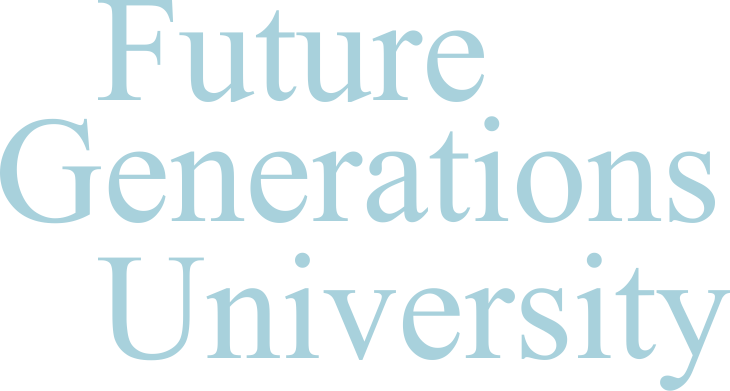
Community development is a holistic approach and an organized effort initiated to assist a group of people in a community to lead a better lifestyle. As the term suggests, it is the combination of community with a development that aims to enhance people’s living standards in a community. In this, people must have faith that working together can make a difference in making the community development programme successful.
Community development involves the principles of sustainable development, empowerment, inclusivity, social justice, human rights, participative democracy, and equality. These community-led programmes led by specific communities aim to address the challenges and gaps oppressing the community members. From the selection of issues to implementation and execution, the community members sit together and decide what steps are to be taken.
These programmes are necessary to ensure fairness and equality within society. Furthermore, these programmes can be used to uplift other members of society. One should note that when talking about communities in community development, it may not be limited to a particular geographical area. The term community refers to people sharing the same interest, identities, heritage, or culture.
Principles of Community Development Programme
The principles of community development can be listed as the following:
-
Community Participation
Every individual in the community is integral to the development and process of decision-making. Community development works on the principle that everyone should take equal responsibility and participate in development projects. Be it evaluation, participation, provision, or direction, members of all levels should make a valuable contribution.
-
Ownership & Involvement
Every member should take complete responsibility and accountability for their work. The staff members, volunteers, and centre participants should collaborate and cooperate effectively to reach the end goals.
-
Empowerment
The act of respecting, enhancing and encouraging people to meet their needs and aspirations in a more informed manner. Empowering other community members means being respectful and non-judgemental and building a relationship where other community members feel comfortable and valued. If community members are empowered, they tend to share their powers and use them for the betterment of society.
-
Equal Access and Opportunities
The disciple of community development aims at enhancing equal participation by the members. This further increases the need to provide equal opportunities to the members and ensure that each member is aligned with the goals.
-
Networking
The basis of community development projects lies in the idea of networking and nurturing relationships with people from industries. Networking can help build connections with other people and groups who might be facing similar challenges. This helps pave the way for different communities to work together and find effective solutions to the prevailing challenges in society. Networking can also help bridge the knowledge gap as communities come together to share existing knowledge, experiences, and resources.
-
Rethinking
Rethinking aims at reviewing or assessing the situation again to bring changes in the desired outcome. It may involve reevaluating the situation from a different perspective and implementing changes that may be beneficial to the community.
-
Advocacy
Community advocacy refers to providing support to others and enabling them to be active citizens. Through advocacy, communities will be well-versed with their societal entitlements and human rights. It will allow the community members to get attention from the top-level professionals and have their voices heard in public.
-
Learning
Learning is a lifelong and never-ending process. The pursuit of knowledge and learning new skills is not only beneficial for personal use but can impact an individual’s professional life as well. Community development works on the principles of learning new skills and gaining knowledge actively. When community members gain new knowledge or skills, they may be able to bring more effective campaigns and results.
Examples of Community Development Project
The main activities of community development programme focuses on providing a better environment for the community members. Here are some examples of community development programmes:
- Providing hostel accommodation or housing facilities to homeless individuals or people who need help.
- Sponsoring libraries and taking steps to improve the educational facilities within the locality.
- Promoting parks and ensuring the cleanliness of the open air spaces to ensure everyone’s well-being.
- Providing healthcare facilities at affordable prices or for free so that every individual gets equal access.
- Distributing free meals to children or opening branches of affordable canteens to help the weaker socio-economic section of society.
Why is a Community Development Project Important?
Community projects play a significant role in the development of society and provides a strong foundation for community members. The community development projects aim to increase social stability and enable underprivileged members to live better lifestyles. It can be seen as a way of strengthening society and taking collective action on relevant issues. Let us discuss some of the reasons why it is essential to incorporate these projects in the country –
-
Achieve Long-Term Development
The main activities of community development programme focus on addressing the problems at the ground level. Community leaders develop and break the goals into short-term and long-term. The final goal is to uplift the weaker and vulnerable section of the society, which may contribute towards the long-term development of the community.
-
Meet the Needs of the Community
The development projects are aimed at addressing the needs of the community members and uplifting them. For instance, the rural community project may aim to teach children and build more educational centres. As an initiative, the members may gather the requisite information, funds, and resources to fulfil the needs of the community members. These activities may also help improve the living standards of the community members.
-
Foundation for Economic Development
The process of community development and economic development are parallelly related to each other. The primary purpose of Community Development Programmes (CDP) is to improve the quality of life, promote sustainability, encourage entrepreneurship, and create more wealth opportunities for the members. The problems that have prevailed for decades have been resolved by such projects. Sustainable development and empowerment principles help set the foundation for economic development.
-
Improves Access to Resources
Access to adequate resources is one of the fundamental prerequisites for empowering the communities and leading the sustainable path. For instance, rural development projects aim at providing education and necessary services to their population. Through strategic development, the communities get enhanced access to services and better opportunities.
-
Addressing the Root Cause of Issues
Addressing the problems at the grassroots level is one of the biggest challenges amongst the communities. Issues related to employment, education, housing, infrastructure, health, and sanitation are serious. When these problems are not addressed, they may pose more significant community threats and challenges. The development projects make sense as they aim to address the root causes and eradicate the issues completely.
-
Empowers Citizens to Exercise their Rights
The concept of community development works on the principles of community ownership and community participation. It encourages every citizen or member of the community to participate equally and share their concerns. Thereby, it influences them to be aware of their rights and responsibilities. The projects empower the socio-economically vulnerable sections of society, including women, scheduled castes (SCs), scheduled tribes (STs), the aged, disabled, poor migrants, etc.
-
Provides a Sense of Inclusion
Community development encourages participation from all the members. It is often observed that migrants or socio-economically weaker communities often find it challenging to raise their voices and participate in the activities. However, these projects aim to encourage equal participation, providing them with a sense of belonging and inclusion. This way, every community member feels valued and is encouraged to speak their views. Being included also leads to unity and helps every community member learn from each other.
How to Conduct a Community Development Programme in Your Area?
Before conducting or initiating a community development project, you must understand that every community may comprise different people. While some members may be actively involved in the community development process, others may be hesitant to participate. Moreover, you need to address a concern that is important to everyone involved. Here, we will share a few significant steps to help you initiate a community development project in your area conveniently:
Step 1: Identify the Problem
The first and most crucial step is identifying the problem and issues impacting the community members. You may conduct a SWOT (strengths, weaknesses, opportunities, and threats) analysis to understand the key challenges, threats, and opportunities. Use a mix of formal and informal methods to identify the problems and needs of the community members.
Many people often conduct surveys to identify their concerns. It is necessary to understand that community members become hesitant and avoid sharing real information. As a leader, you should take steps to communicate with the members directly, conduct focus group interviews, and other initiatives to identify the real causes.
Step 2: Understanding the Community Context
Before planning any initiative, it is equally important to understand the characteristics of the community members and find out where their interests intersect. Here are some of the questions to which you must find answers:
What are the socio-economic and demographic characteristics of people living in that area?
What social, economic and environmental challenges are the community members facing?
What are the priorities and beliefs of the people living in the neighbourhood?
Are any steps or initiatives being taken to improve the current situation and help members live better lives?
Take note of the employment growth opportunities and educational and promotional strategies that address the community members’ concerns.
Step 3: Identify the Stakeholders
The next step is to identify the stakeholders and understand who your real stakeholders are. Identify the citizens who are experiencing the issue and identify the community members who are willing to take the lead. You will find a mix of people within the community. Some may be willing to take action, while others may be hesitant because of other concerns. Try to nurture your relationships with the community members first so that you can encourage them to take the desired action.
Step 4: Articulate Your Mission and Vision
Mission and vision statements play a significant role and help define the purpose of the action item. This may further help in developing measurable goals for the community development programme. The mission statement should outline the steps to reach the goal. In contrast, the vision statement should describe the initiatives that will be taken in the future for the development of the community.
These statements may serve as the roadmap and assist with the communities’ betterment. Make sure you articulate the mission, and vision and discuss it with the community leaders or members.
Step 5: Define Your Community Consultation Plan
The next step that you should take is to articulate or create a layout of the plan for the community development programme. Before you start building a layout for the project, you should understand the issues that need to be addressed and the cultural influences that may impact the community members. You must keep some aspects in mind while creating your community consultation plan.
- List down the mission, vision, and goals that you want to achieve with the help of the community development plan.
- Steps to be be taken to engage the community members in developing the vision.
- Initiatives to be taken to engage the community members and influence them to be active participants.
- Steps to create strong relationships between the community members and the organization.
- Plan to build and maintain the momentum for the project.
A plan will serve as the roadmap and include the steps you have to take to complete the project milestones.
Step 6: Develop and Implement Strategies
Make sure you list the strategies you would want to implement to bring the changes and uplift the community members in the society. Once you are done strategizing, execute the process and take steps to implement the action plan. At the implementation stage, you should keep evaluating the strategies that may be applicable, and that may not be ideal for the community development project.
Step 7: Evaluate the Impact
The last step is to organize and evaluate the steps’ impact. Use different evaluation methods to understand the impact of the project. Check if the goals and objectives have been met and what other issues need to be addressed.
How to Do a Community Development Course?
Community Development is an academic discipline and a practice-based profession that helps set the foundation for an empowered society that promotes equality and social justice. Future Generations University offers two courses in community development, which are as follows:
-
Certificate in Applied Community Development
If you are not keen on pursuing a Master’s degree, you may proceed with a certification course in Applied Community Development from Future Generations University. The main highlight of the course is that you can choose the duration according to your convenience. You can complete the course in one year by taking two courses per semester. The other way could be by taking one course per semester for two years. Build your skills in sustainable development and community resilience with the help of the course. The course fees are reasonable, and the course will enhance your learning of the subject.
-
Online Master’s Program in Community Development
Students who wish to enhance their leadership skills and explore the field of community development in depth can enrol on the Master’s program in Community Development. Learn how you can drive change that is inclusive and sustainable. Complete Master’s in less than 22 months from the Future Generations University.
Community development is a rewarding and meaningful career. Consider these options and build your career in the field.



